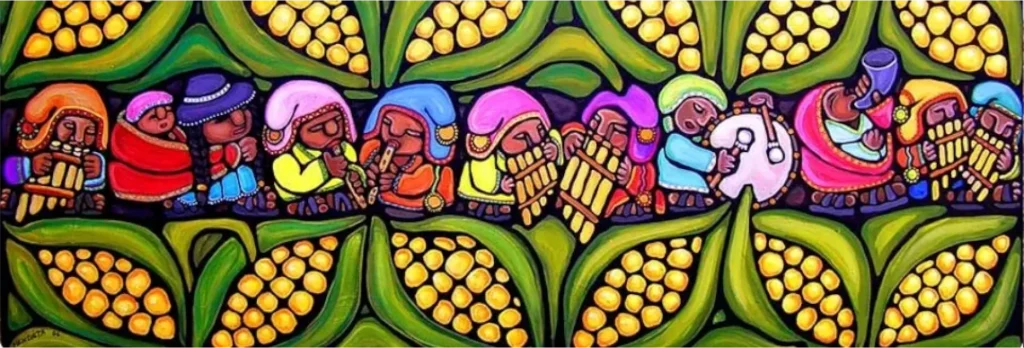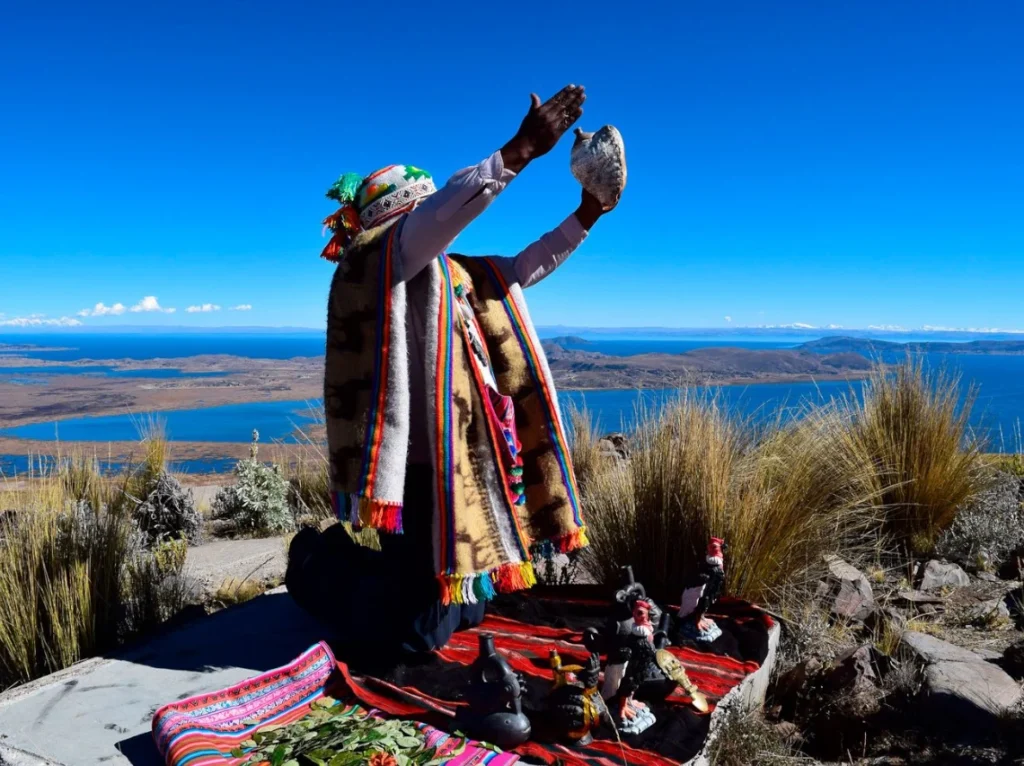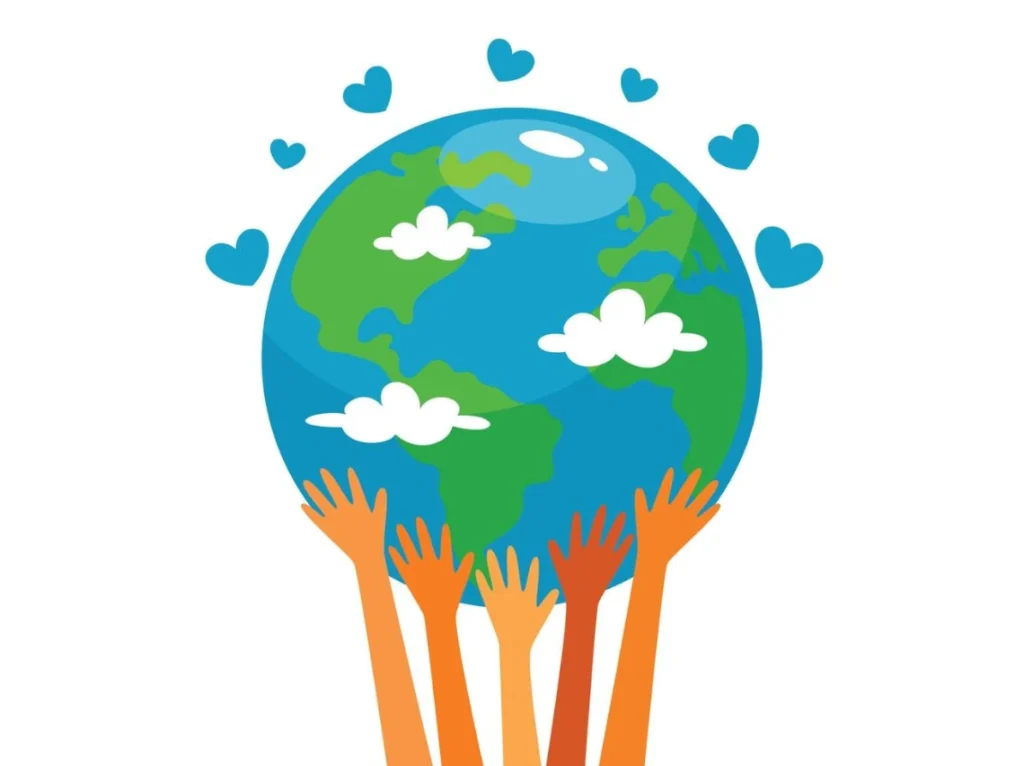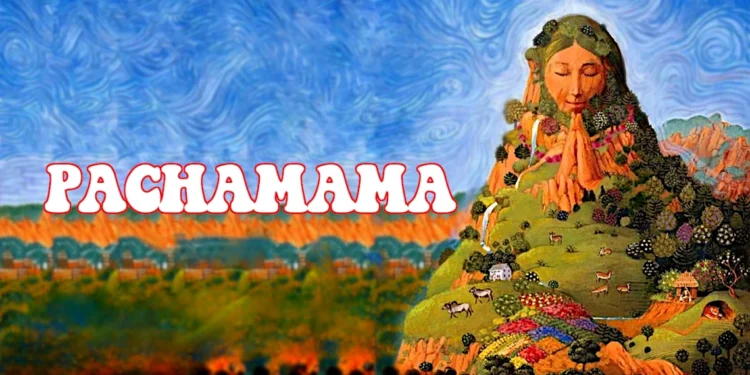This post is also available in:
Español
Nederlands
A Whisper in the Andes: The Voice of Pachamama
High in the Andes mountains, where clouds caress the peaks and the wind sings ancient stories, there is a presence that has been revered for centuries. She is Pachamama, Mother Earth, the sacred spirit that nourishes and sustains all life. For the Indigenous Andean peoples, she is not just a symbol, but a living reality—an entity that feels, gives, and also demands respect.
Imagine yourself standing atop the Andes, feeling the energy of the earth beneath your feet, hearing the echo of ceremonial drums and the whispers of wise elders who, speaking in Quechua, offer thanks to Pachamama. This mystical and respectful connection with nature remains alive today, reminding us of the importance of living in harmony with our surroundings.
Who is Pachamama?
The word “Pachamama” comes from Quechua, the ancient language of the Andes. It is composed of two elements: pacha, meaning “world” or “universe,” and mama, meaning “mother.” In other words, Pachamama is the mother of the universe—the goddess of fertility, abundance, and life.
For the Indigenous cultures of Peru, Bolivia, Ecuador, and northern Argentina and Chile, Pachamama is more than just a concept; she is a divine being present in every mountain, every river, and every tree. Her influence runs so deep that even today, rituals are performed to thank her for the food, water, and protection she provides.

Connection with Nature: The Principle of Reciprocity
The Andean worldview is based on the principle of reciprocity (ayni in Quechua). This means that everything received from Pachamama must be returned in some way. That’s why Indigenous peoples carry out rituals such as challa—an offering of coca leaves, chicha (a fermented corn drink), and other natural elements—to give thanks and ask for protection.
The man of the Andes made offerings based on his solid system of reciprocity: the land gave him food and shelter, and he gave back the best of what he had.
This respectful and balanced relationship with nature is something that modern society has largely forgotten, but it continues to be a fundamental pillar of Andean tradition.
Rituals and Celebrations Honoring Pachamama
Throughout the year, there are several occasions when Pachamama is honored, but August 1st is the most significant. On this day, Andean communities perform ceremonies where food, coca leaves, and other items are buried in the earth as an act of gratitude and a request for blessings.
Another meaningful ritual is the Andean Mesa, an offering made up of various elements such as sweets, seeds, incense, and colored wool, symbolizing wishes for harmony, health, and prosperity.
The Peruvian anthropologist José María Arguedas once wrote about this special connection:
“The Andean man does not see the earth as an object, but as a living being that feels and responds to our actions.”
These traditions remind us that our relationship with nature should not be one of exploitation, but of harmony and gratitude.

Pachamama in the Present Day
Despite the advance of modernity and globalization, devotion to Pachamama remains alive. In many Andean cities, even in large urban centers like Cusco and La Paz, people still practice rituals of gratitude. Furthermore, her influence has crossed borders, and more and more people around the world are embracing her values of respect and environmental care.
In a time of climate crisis, Pachamama’s message is more relevant than ever. She invites us to reflect on how we treat our planet and to seek ways to live in harmony with nature.
The story of Pachamama is full of secrets, myths, and lessons. In future articles, we’ll explore her legends, her most iconic rituals, and her influence in today’s world.

If this article sparked your curiosity, share it on your social media and subscribe to our page to learn more about the ancestral wisdom of the Andes!
Leave us a comment: What do you think about the idea of treating Earth as a living being? We’d love to hear your perspective!








